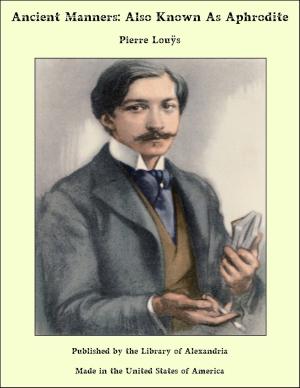The Legendary History of the Cross: A Series of Sixty-four Woodcuts from a Dutch Book Published by Veldener, A.D. 1483
Nonfiction, Religion & Spirituality, New Age, History, Fiction & Literature| Author: | John Ashton | ISBN: | 9781465603852 |
| Publisher: | Library of Alexandria | Publication: | March 8, 2015 |
| Imprint: | Language: | English |
| Author: | John Ashton |
| ISBN: | 9781465603852 |
| Publisher: | Library of Alexandria |
| Publication: | March 8, 2015 |
| Imprint: | |
| Language: | English |
THE Cross on which our Lord and Saviour suffered, would, naturally, if properly authenticated, be an object of the deepest veneration to all Christian men, be their creed, or shade of opinion what it might; but, for over 300 years it could not be found, and it was reserved for the Empress Helena in her old age (for she was 79 years old) to discover its place of concealment.1 That this Invention, or finding of the Cross was believed in, at the time, there can be no manner of doubt, for it is alluded to by St. Cyril, Patriarch of Jerusalem (A.D. 350 to 386), and by St. Ambrose. Rufinus of Aquila, a friend of St. Jerome, in hisEcclesiastical History, gives an account of its finding, in the following words: “About the same time, Helena, the mother of Constantine, a woman of incomparable faith, whose sincere piety was equalled by her rare munificence, warned by celestial visions, went to Jerusalem, and inquired of the inhabitants where was the place where the Divine Body had been affixed and hung on a gibbet. This place was difficult to find, for the persecutors of old had raised a statue to Venus,2 in order that the Christians who might wish to adore Christ in that place, should appear to address their homage to the goddess; and thus it was little frequented, and almost forgotten. After clearing away the profane objects which defiled it, and the rubbish that was there heaped up, she found three crosses placed in confusion. But the joy which this discovery caused her was tempered by the impossibility of distinguishing to whom each of them had belonged. There, also, was found the title written by Pilate in Greek, Latin, and Hebrew characters; but still there was nothing to indicate sufficiently clearly the Cross of our Lord. This uncertainty of man was settled by the testimony of heaven.” And then follows the story of the dead woman being raised to life.
THE Cross on which our Lord and Saviour suffered, would, naturally, if properly authenticated, be an object of the deepest veneration to all Christian men, be their creed, or shade of opinion what it might; but, for over 300 years it could not be found, and it was reserved for the Empress Helena in her old age (for she was 79 years old) to discover its place of concealment.1 That this Invention, or finding of the Cross was believed in, at the time, there can be no manner of doubt, for it is alluded to by St. Cyril, Patriarch of Jerusalem (A.D. 350 to 386), and by St. Ambrose. Rufinus of Aquila, a friend of St. Jerome, in hisEcclesiastical History, gives an account of its finding, in the following words: “About the same time, Helena, the mother of Constantine, a woman of incomparable faith, whose sincere piety was equalled by her rare munificence, warned by celestial visions, went to Jerusalem, and inquired of the inhabitants where was the place where the Divine Body had been affixed and hung on a gibbet. This place was difficult to find, for the persecutors of old had raised a statue to Venus,2 in order that the Christians who might wish to adore Christ in that place, should appear to address their homage to the goddess; and thus it was little frequented, and almost forgotten. After clearing away the profane objects which defiled it, and the rubbish that was there heaped up, she found three crosses placed in confusion. But the joy which this discovery caused her was tempered by the impossibility of distinguishing to whom each of them had belonged. There, also, was found the title written by Pilate in Greek, Latin, and Hebrew characters; but still there was nothing to indicate sufficiently clearly the Cross of our Lord. This uncertainty of man was settled by the testimony of heaven.” And then follows the story of the dead woman being raised to life.















